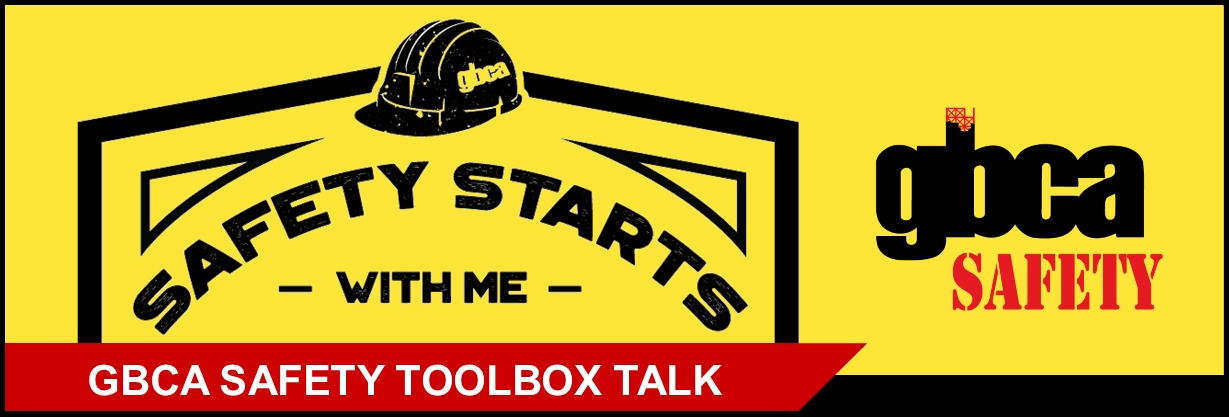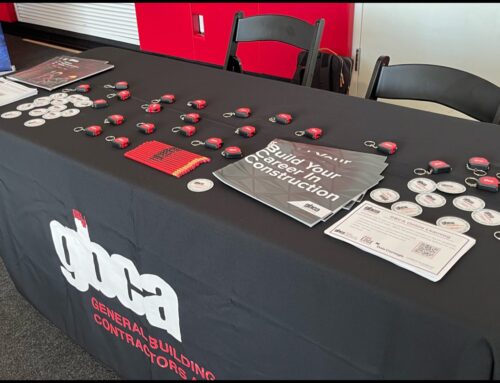This GBCA Safety Toolbox Talk discusses how to choose and use the correct ladder for the job. Click below to download the Toolbox Talk as a handout (includes Sign-In Sheet).
Ladder Safety: Choose & Use the Correct Ladder
Applying proper ladder safety techniques can reduce the likelihood of an injury whether you’re using a ladder at work or at home. Ladder safety starts by choosing the correct ladder. Using a ladder safely can make a job easier. Incorrect ladder use can lead to a fall resulting in a trip to the hospital, or worse, a fatality.
Choose the right ladder for your application:
- Select the correct style of ladder needed for your application:
- Do you need a straight, A-frame, extension, or other ladder?
- Select the appropriate ladder height:
- Remember an extension ladder needs to extend 3 feet above a roofline or working platform.
- Select the appropriate ladder duty rating:
- See the load rating on the affixed factory sticker. If there is no sticker or you can’t read the sticker, don’t use the ladder.
- Select the proper ladder material:
- Use fiberglass when working around electricity. Many construction sites only allow fiberglass ladders on site.
- Avoid using aluminum ladders around energized power lines.
When using a ladder, use these key points:
- Keep your belt buckle in between the side rails to make sure your body is centered.
- When ascending and descending, face the ladder.
- Use three points of contact when climbing a ladder.
- Remember the highest standing level on a stepladder is two steps down from the top.
- Remember the highest standing level on an extension ladder is four rungs from the top.
- Always inspect ladders for structural defects such as broken or missing rungs, cracked side rails, corroded components, or other faulty or defective components. In the event a ladder fails inspection, do not use the ladder and notify management. Tag the ladder as not safe to use, and remove it from the site.
Remember to record the attendees of your toolbox talk!
Access GBCA’s full library of toolbox talks:





